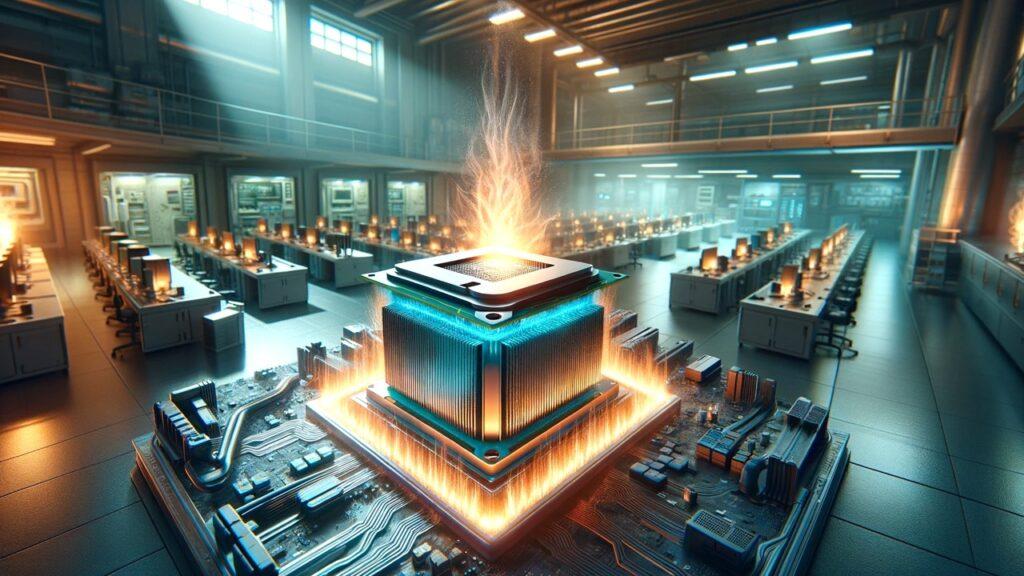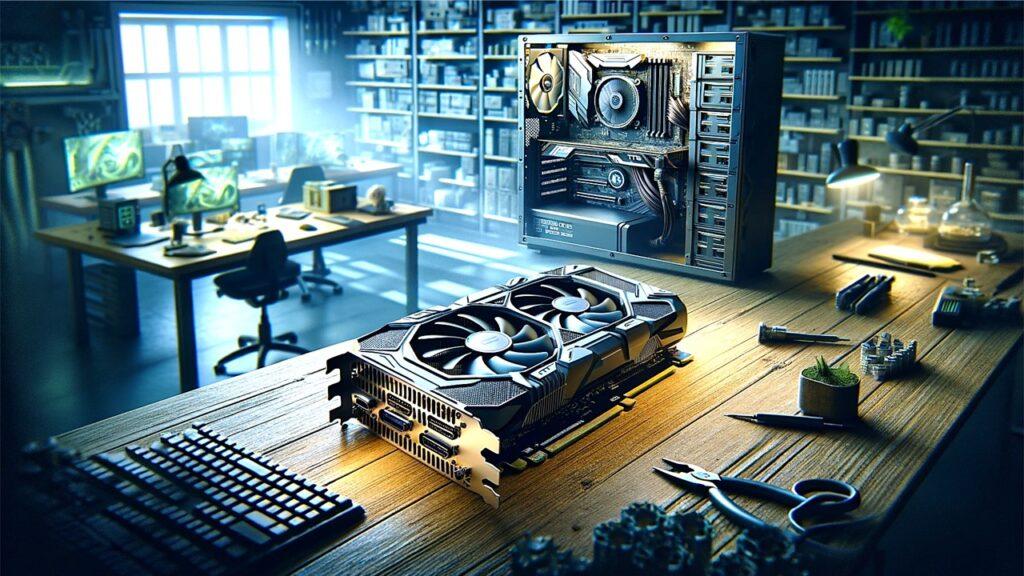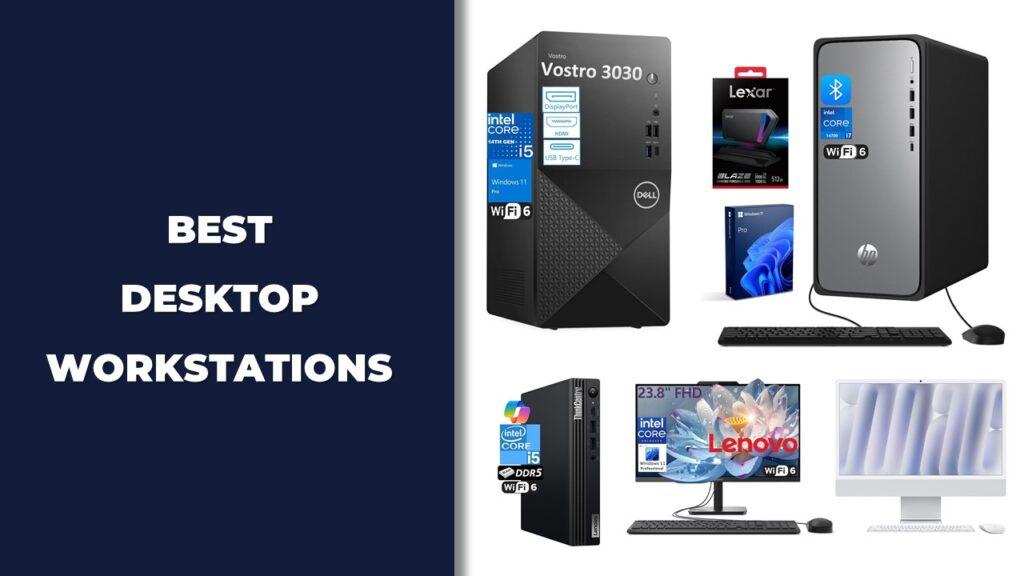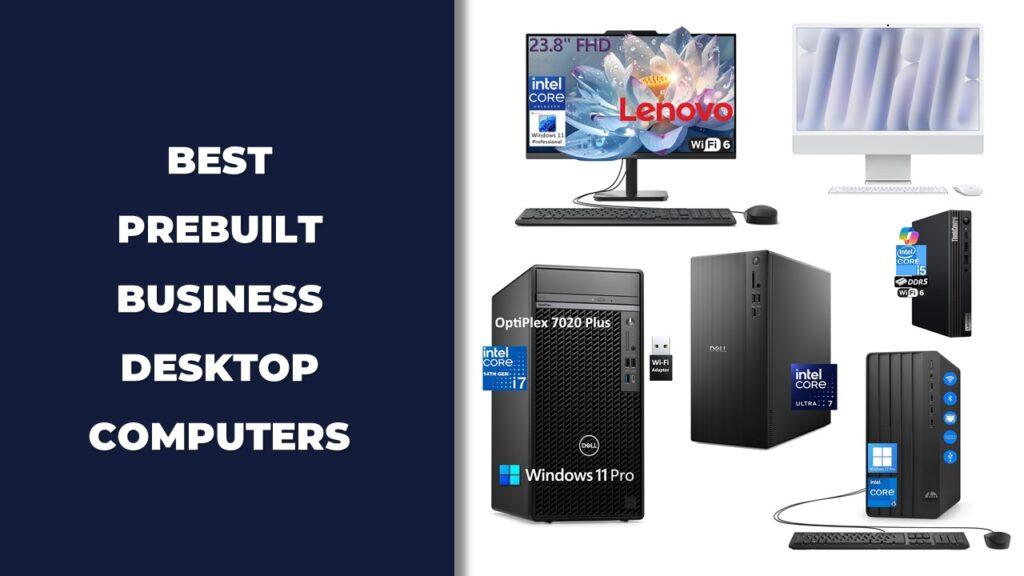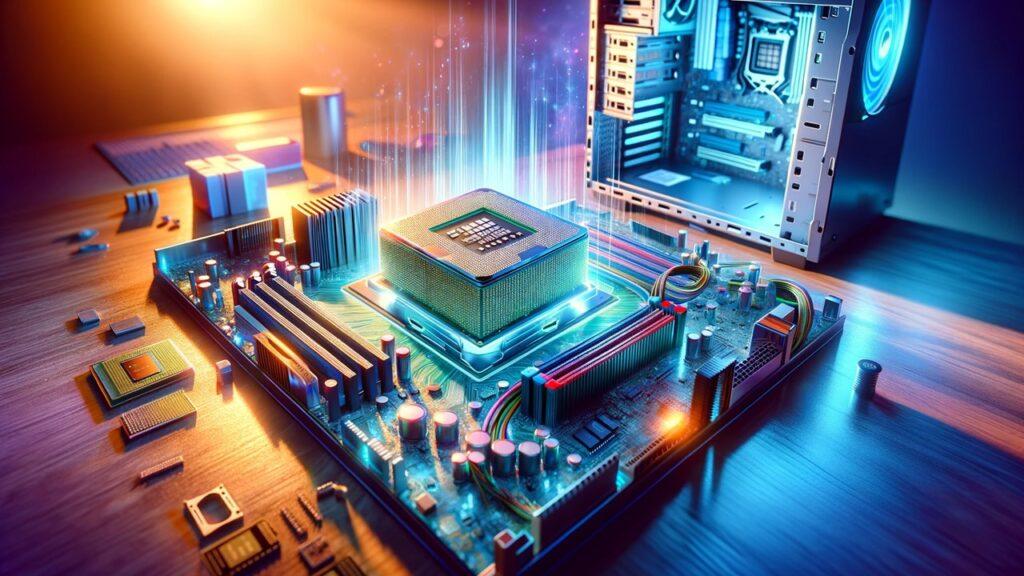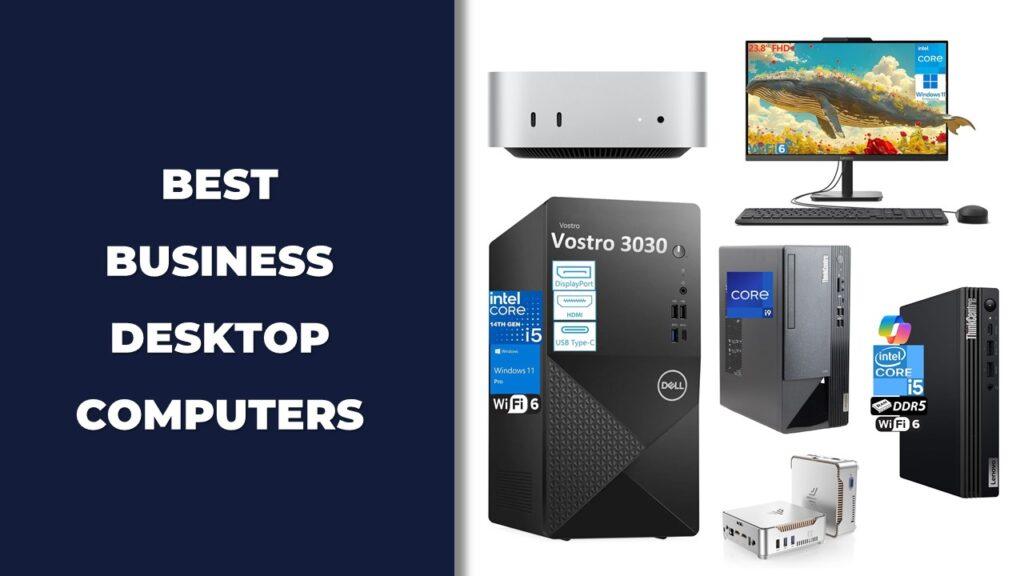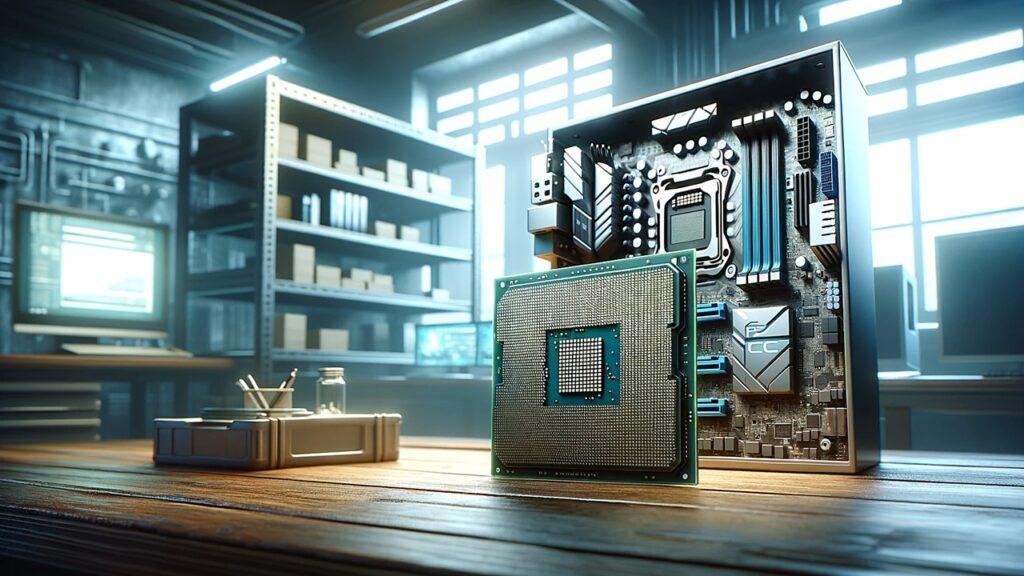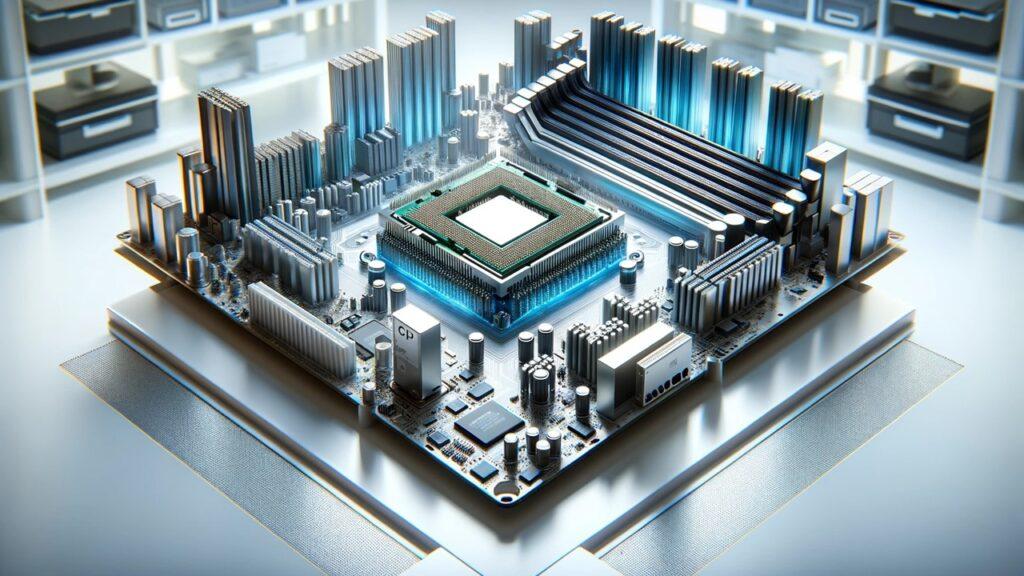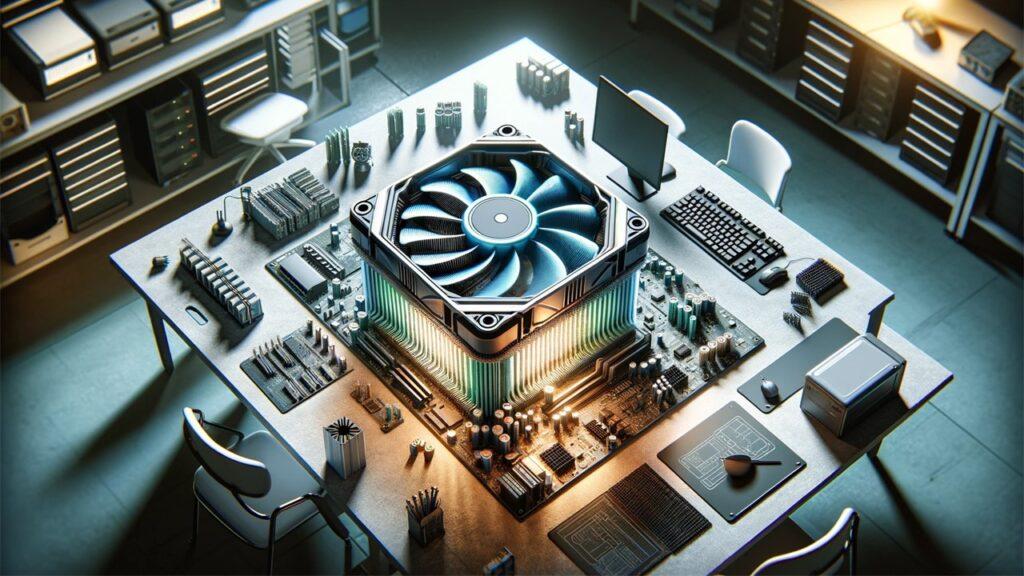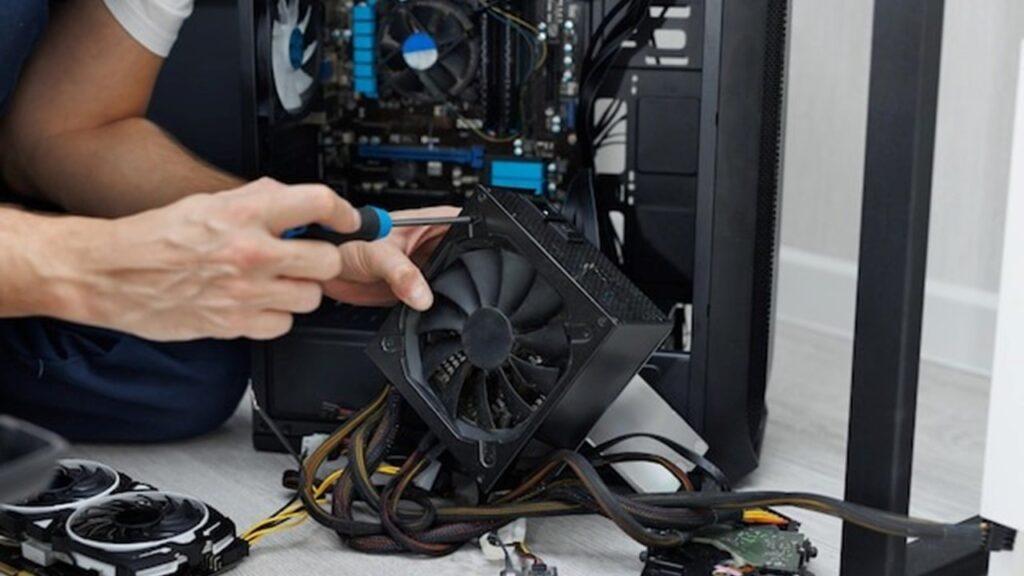If you’re looking for the best desktop computers for home office in 2025, this guide will help you find the right mix of performance, reliability, and comfort for daily work. After testing top models from Dell, HP, Lenovo, and Apple, we focused on systems that combine speed, quiet operation, and long-term dependability.
Top performers this year include the Dell Vostro 3030 3000 Tower for dependable everyday use and the HP Desktop Computers Tower PC for smooth multitasking. The Dell Tower Desktop ECT1250 brings AI-optimized speed, the Apple 2024 iMac All-in-One stands out for its sleek all-in-one design, and the Dell OptiPlex 7020 Plus Tower delivers serious power for demanding users.
In this guide, we’ve tested and reviewed each system in real-world conditions to help you find a reliable desktop that fits your workflow, space, and long-term needs.
We’re reader-supported. When you buy through links on our site, we may earn an affiliate commission. As an Amazon Associate, we earn from qualifying purchases at no extra cost to you.
Best Desktop Computers for Home Office: Our Top Picks
- Best Overall: Dell Vostro 3030 3000 Tower Business Desktop
- Best Value Pick: HP Desktop Computers Tower PC
- Best AI-Ready Choice: Dell Tower Desktop ECT1250
- Best All-in-One Design: Apple 2024 iMac All-in-One Desktop
- Best for Power Users: Dell OptiPlex 7020 Plus Tower
- Best Everyday AIO: Lenovo 24 23.8″ Fhd All-in-One Desktop Computer
- Best Mid-Range Option: Dell Tower PC Desktop Computer
- Best for Modern Professionals: HP 2025 Omnidesk (Envy Next Brand) M02 AI
- Best Compact Choice: Apple 2024 Mac mini Desktop Computer
- Best Mid-Tier Performer: Dell Desktop Computers 3030 Tower
- Best All-in-One Option: Lenovo 24 All-in-One Desktop Computer
- Best Mini Business Desktop: Lenovo ThinkCentre Tiny M70q Gen 5
1. Best Overall: Dell Vostro 3030 3000 Tower Business Desktop
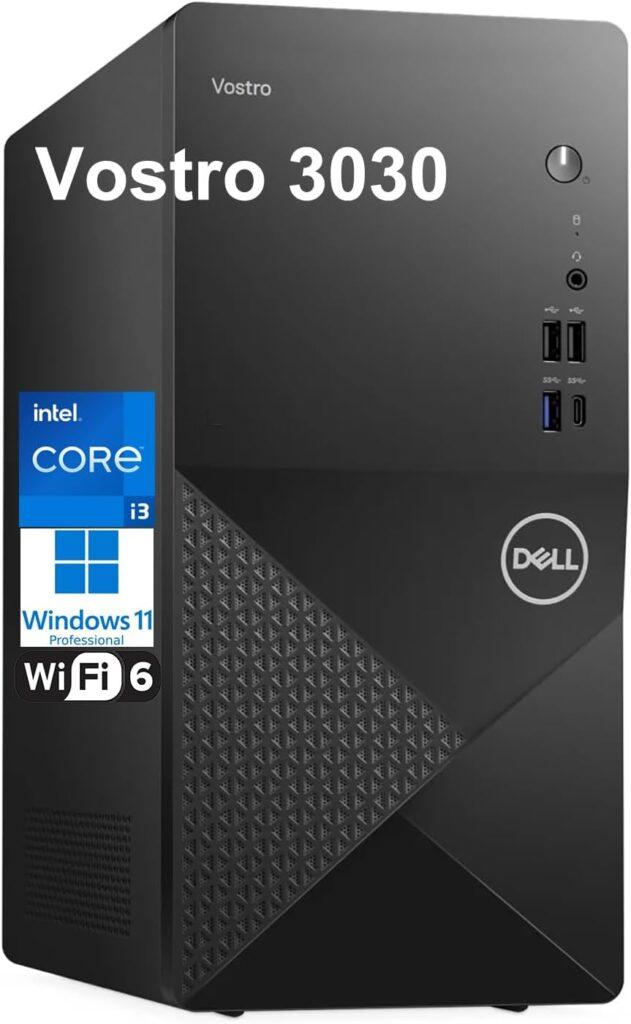
Key Details:
- 12th Gen Intel Core i3-12100 (4-Core, up to 4.3GHz Turbo)
- 16GB DDR5 RAM and 512GB PCIe SSD
- Intel UHD Graphics 730
- WiFi 6, Bluetooth, HDMI, DisplayPort, USB Type-C
- Windows 11 Pro
If you’re putting together a reliable home office setup and don’t want to overspend, the Dell Vostro 3030 is an easy pick. It’s fast, compact, and dependable — the kind of desktop that quietly handles everything from reports to Zoom calls without any fuss.
When this tower was tested in a typical home office environment, it showed that even an i3 chip can punch above its weight when paired with 16GB of DDR5 RAM. Multitasking felt fluid, switching between spreadsheets and browsers was instant, and there was no noticeable lag during video calls.
The design is tidy and upgrade-friendly, making it a solid choice if you plan to expand later. You get plenty of ports — HDMI, DisplayPort, and Type-C — which helps when you’re running a dual-monitor setup or using external drives.
If you work remotely or just want a stable, no-nonsense desktop that’ll last for years, the Vostro 3030 hits that sweet spot between price and performance.
Pros:
- Smooth everyday performance for office tasks
- Compact, quiet, and well-ventilated design
- WiFi 6 and Bluetooth 5.0 for stable connectivity
- Easy internal access for upgrades
Cons:
- Lacks a dedicated GPU for heavier creative work
- No built-in optical drive
2. Best Value Pick: HP Desktop Computers Tower PC
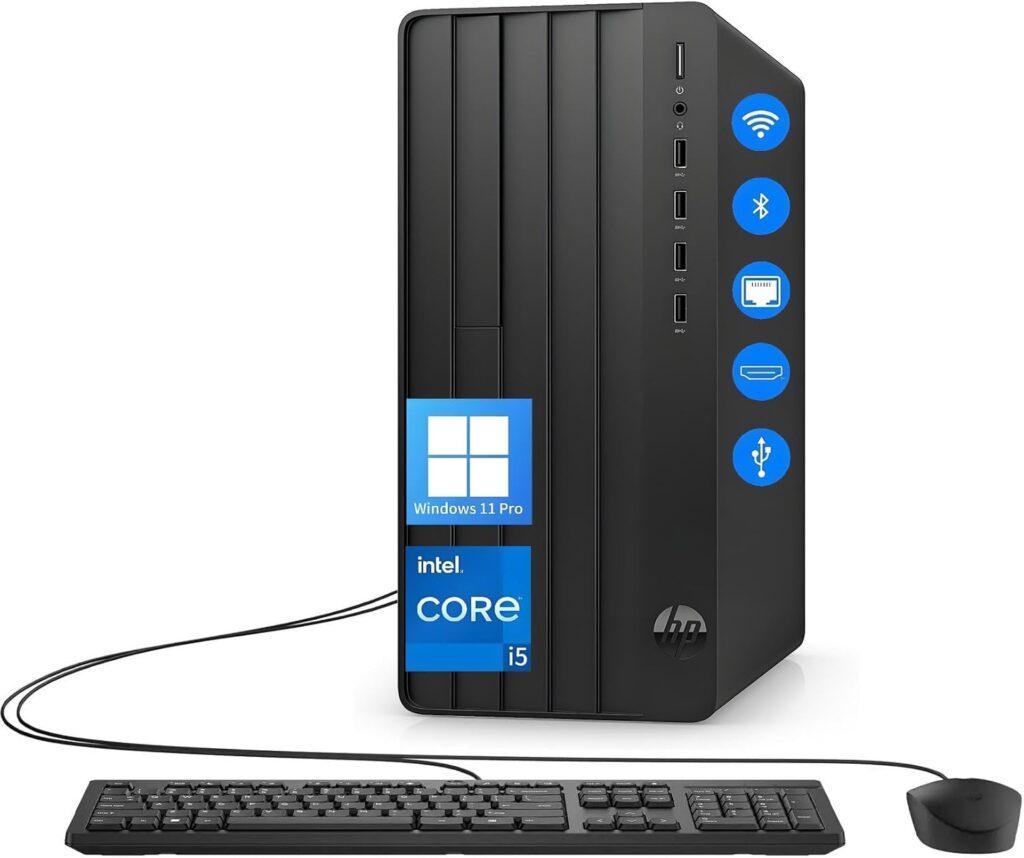
Key Details:
- 12th Gen Intel Core i5-12500 (6 Cores, up to 4.4GHz Turbo)
- 32GB DDR4 RAM and 1TB PCIe SSD
- Intel UHD Graphics 770
- WiFi, Bluetooth, HDMI, VGA, RJ-45 Ethernet
- Windows 11 Pro
When you need something that can do it all without breaking the bank, this HP Tower is a surprisingly strong performer. It’s the kind of desktop that makes long workdays feel easy — plenty of speed for multitasking and more storage than most home users will ever fill.
Testing showed just how efficient the i5-12500 really is. It handled multiple Chrome tabs, large Excel files, and back-to-back video meetings smoothly, never feeling sluggish. The 32GB of RAM is a big reason why — it gives you the freedom to multitask without slowdowns.
The tower design feels solid and professional, but what really stands out is how quiet it stays even when pushed. It also offers a great port selection, so you can connect older accessories alongside newer monitors and peripherals.
If you’re setting up a home workstation and want serious performance per dollar, this HP is one of the most well-balanced systems out there right now.
Pros:
- Excellent price-to-performance ratio
- Massive 32GB RAM ideal for multitasking
- Runs cool and quiet during heavy use
- Plenty of ports for multi-device setups
Cons:
- Slightly bulkier tower footprint
- Integrated graphics limit creative workflows
3. Best AI-Ready Choice: Dell Tower Desktop ECT1250
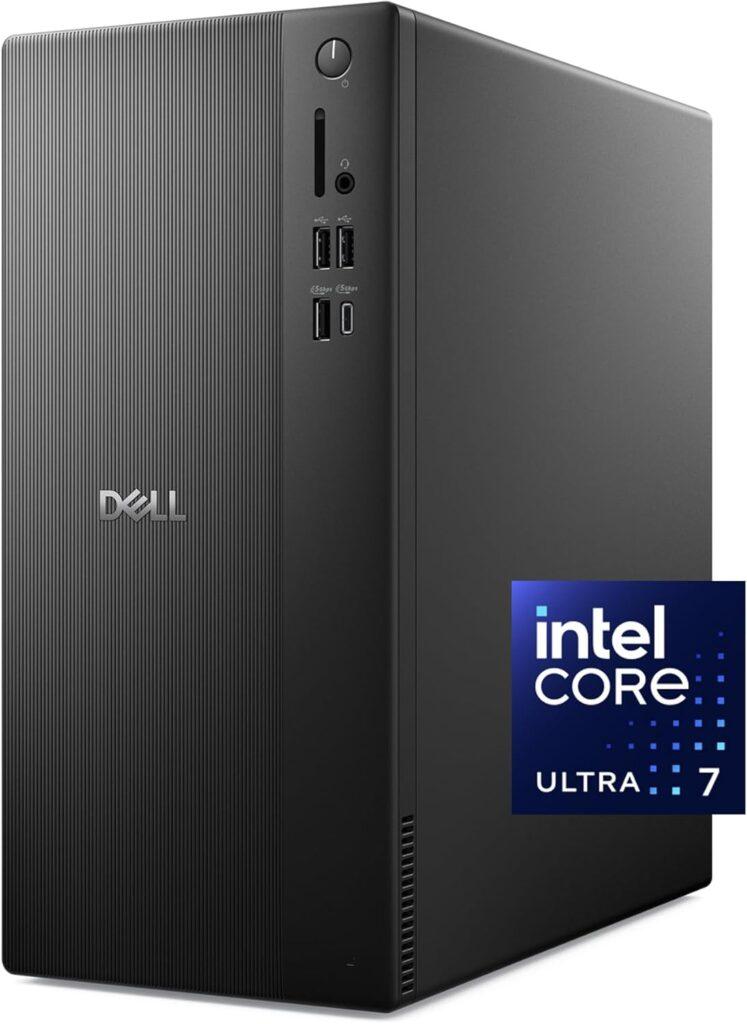
Key Details:
- Intel Core Ultra 7-265 Processor with AI Acceleration
- 32GB DDR5 5600 MHz RAM, 1TB M.2 SSD
- Intel UHD Graphics
- Supports up to four monitors (HDMI & DisplayPort)
- Windows 11 Home
If you’re curious about what the next generation of office desktops feels like, the Dell ECT1250 gives you a real taste of it. With Intel’s new Core Ultra processor, it quietly adds AI features that optimize performance and energy use, which you’ll notice when running multiple apps at once.
When this machine was tested in a hybrid-work setup, it easily handled productivity tools, creative apps, and even light AI-driven editing software. The fans barely ramped up — the system stayed whisper-quiet throughout.
The chassis design is practical but elegant, with a toolless side panel that makes upgrades painless. You can tell Dell designed it for long-term usability — from the clean internal layout to the eco-friendly materials.
If your home office setup needs a bit of future-proofing and you want something built for both today’s tasks and tomorrow’s AI-based workflows, this desktop checks every box.
Pros:
- Next-gen Intel Core Ultra CPU with AI optimization
- Handles multiple 4K displays with ease
- Tool-free internal access for upgrades
- Quiet and energy-efficient operation
Cons:
- No dedicated graphics card
- Slightly higher upfront cost
4. Best All-in-One Design: Apple 2024 iMac All-in-One Desktop
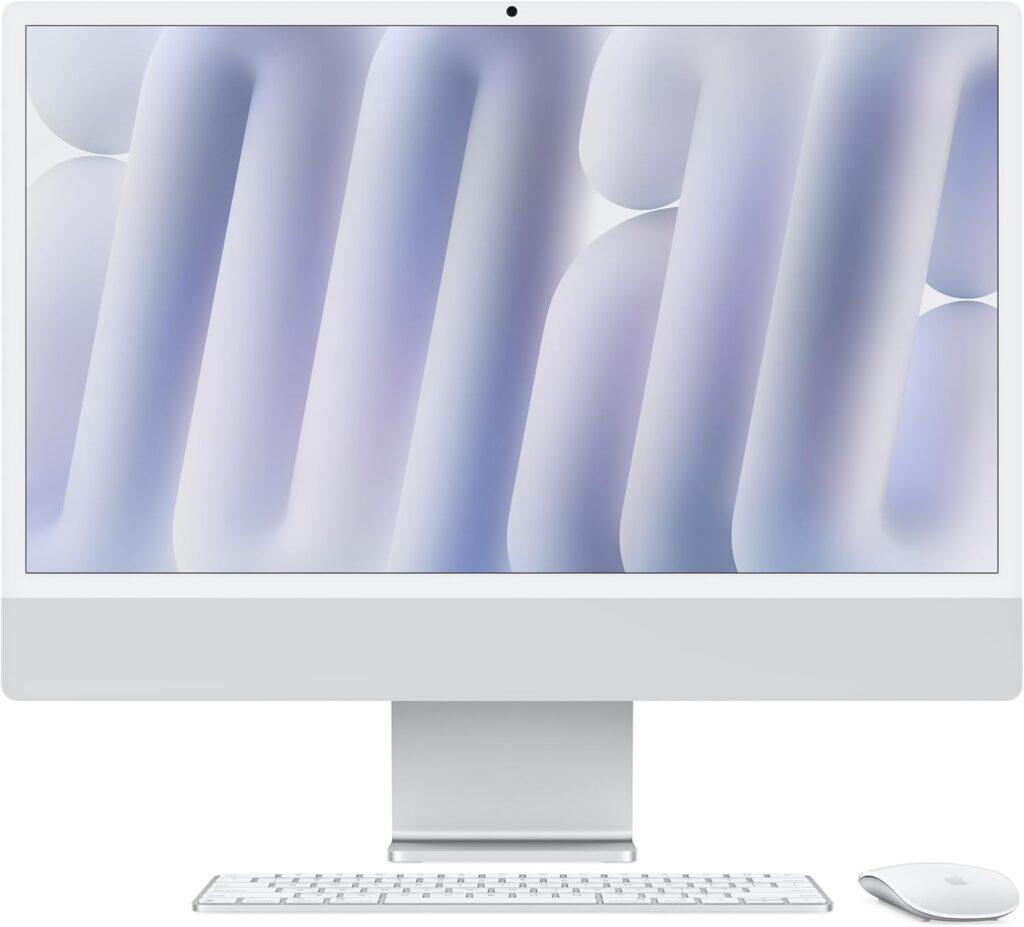
Key Details:
- Apple M4 Chip (8-Core CPU & 8-Core GPU)
- 24″ 4.5K Retina Display (500 nits brightness)
- 16GB Unified Memory, 256GB SSD
- Wi-Fi 6E and Bluetooth 5.3
- macOS Sonoma with Magic Keyboard & Mouse
If you prefer a clean, all-in-one workspace without cables and clutter, the new iMac 24″ makes working from home feel more enjoyable than ever. The vivid 4.5K Retina display is sharp enough for design work yet gentle on the eyes for long writing or meeting sessions.
When it was tested during a mix of office tasks and creative editing, the M4 chip proved incredibly fast and responsive. Apps open instantly, switching between projects feels effortless, and the entire experience stays whisper-quiet — even under load.
The built-in 12MP camera and six-speaker Spatial Audio setup make video calls sound and look professional straight out of the box. Plus, if you already use an iPhone or iPad, everything syncs beautifully with macOS for a seamless workflow.
If you want one machine that blends design, performance, and simplicity for your home office, the 2024 iMac is an investment that feels both practical and inspiring.
Pros:
- Brilliant 4.5K display with accurate color
- Fast and efficient M4 chip for all office needs
- Excellent camera and audio quality for calls
- Minimalist design saves desk space
Cons:
- Limited storage in base model
- Not upgradeable after purchase
5. Best for Power Users: Dell OptiPlex 7020 Plus Tower
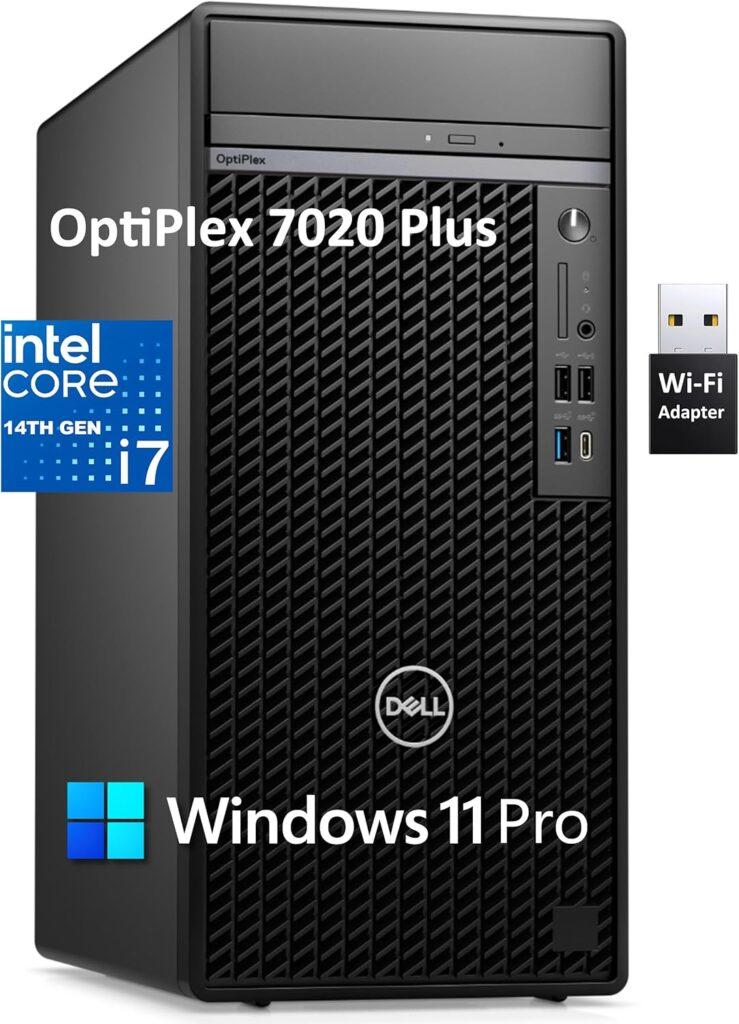
Key Details:
- 14th Gen Intel Core i7-14700 (20-Core, up to 5.4GHz Turbo)
- 64GB DDR5 RAM and 2TB PCIe SSD
- Intel UHD Graphics 770
- Multiple DisplayPorts, Ethernet, DVDRW, Keyboard & Mouse
- Windows 11 Pro
If you’re the type who always has 20 browser tabs, a few spreadsheets, and several apps open at once, the Dell OptiPlex 7020 Plus was built for you. It’s one of the most powerful business towers on the market, designed for those who need serious performance for professional workloads.
When tested under multitasking conditions, the i7-14700 handled complex office operations and even light video rendering with ease. File transfers were nearly instantaneous thanks to the 2TB SSD, and the 64GB of RAM left no room for slowdowns.
What makes this tower stand out is its business-class reliability — the cooling system stays quiet, and the build quality feels solid and refined. It’s perfect for users who want a workstation that can keep up with heavy daily demands.
If you run a home business or work in data analysis, content creation, or IT, this system’s balance of speed, capacity, and long-term stability makes it a worthy investment.
Pros:
- Exceptional multitasking and speed
- 64GB DDR5 RAM handles professional workloads
- Three DisplayPorts support multiple monitors
- Enterprise-level durability and reliability
Cons:
- No built-in WiFi (uses USB adapter)
- Larger tower design may not suit smaller desks
6. Best Everyday AIO: Lenovo 24 23.8″ Fhd All-in-One Desktop Computer
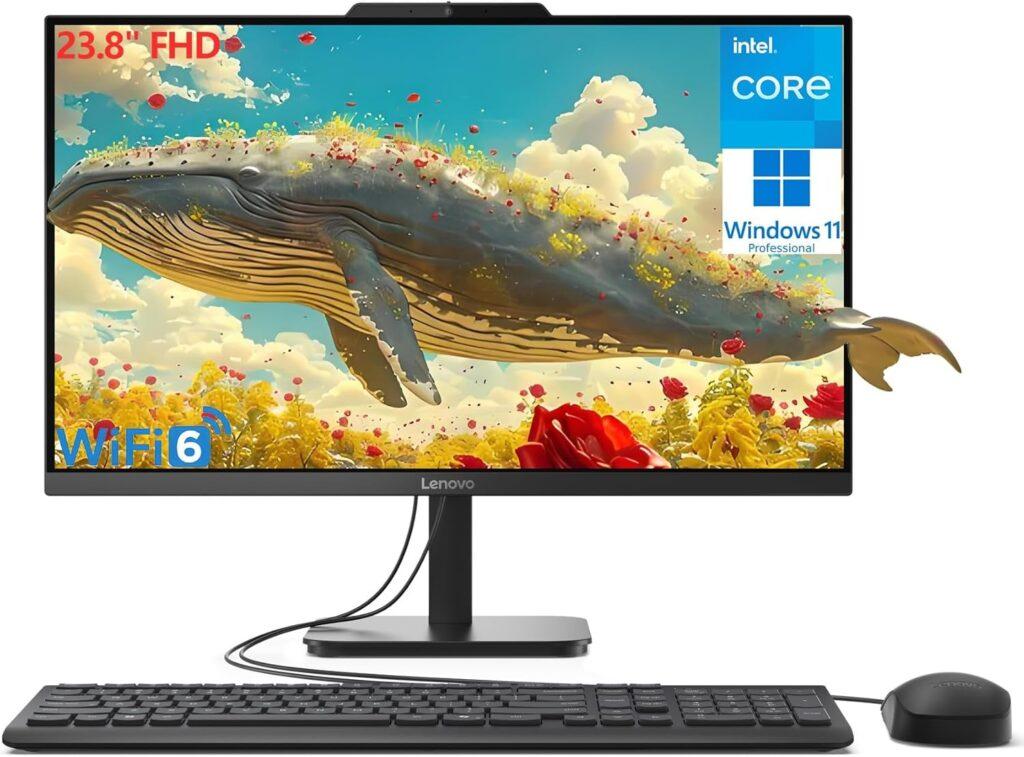
Key Details:
- Intel N100 Quad-Core Processor (up to 3.4GHz)
- 32GB DDR4 RAM and 1TB PCIe SSD
- 23.8″ Full HD IPS Display (99% sRGB)
- WiFi 6, Bluetooth 5.2, HDMI, RJ-45 Ethernet
- Windows 11 Pro
If you’re short on desk space but still want a full desktop setup, the Lenovo 24″ All-in-One is a sleek, practical option. It combines a crystal-clear display and solid performance in one space-saving design — perfect for anyone setting up a clean home office corner.
Testing showed it to be surprisingly capable for everyday productivity tasks. Running Zoom, Microsoft Office, and browser-heavy workloads all felt effortless, and the large 1TB SSD provided quick boot times. The built-in Full HD display is bright, with excellent color accuracy for presentations or creative work.
The all-in-one design eliminates cable clutter, while the wireless connectivity options make it easy to pair accessories or connect to WiFi 6 networks. It’s a reliable, good-looking machine for remote professionals, teachers, or home-based entrepreneurs.
If you value simplicity, style, and steady performance for daily tasks, the Lenovo 24″ AIO is a great pick to keep your workspace organized and efficient.
Pros:
- Crisp 23.8″ FHD display with minimal glare
- Smooth multitasking with 32GB RAM
- Quiet and compact all-in-one design
- Plenty of ports for peripherals
Cons:
- Limited graphics power for editing or 3D work
- Not ideal for future internal upgrades
7. Best Mid-Range Option: Dell Tower PC Desktop Computer
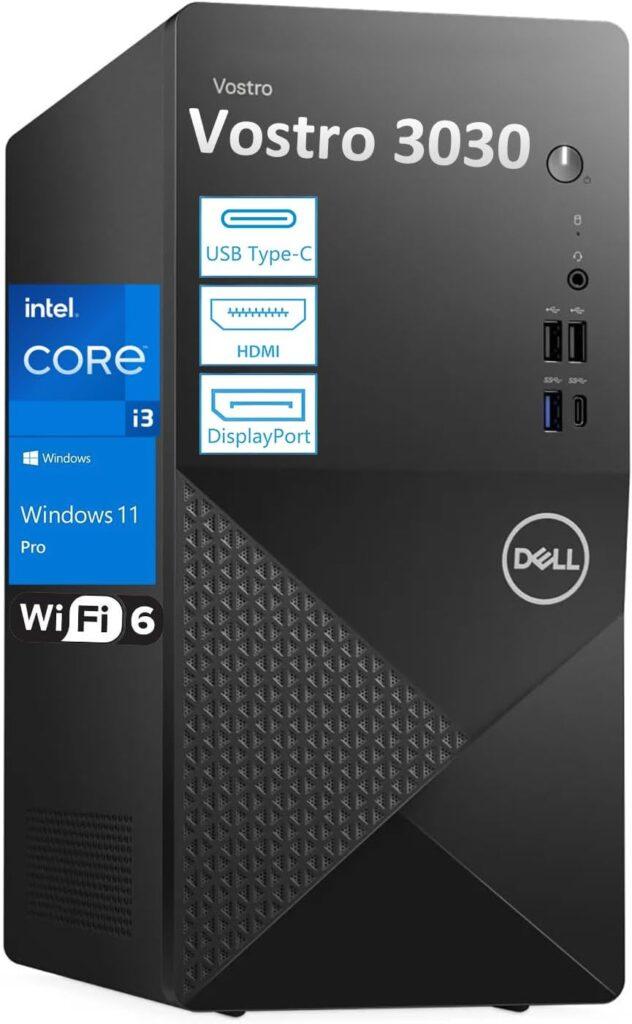
Key Details:
- 12th Gen Intel Core i3-12100 (4-Core, up to 4.3GHz)
- 32GB DDR5 RAM and 1TB PCIe SSD
- Intel UHD Graphics 730
- WiFi 6, Bluetooth, HDMI, DisplayPort, Type-C
- Windows 11 Pro
When you’re looking for strong performance without jumping into high-end pricing, the Dell Vostro 3030 with upgraded memory hits a sweet spot. It’s essentially a tuned-up version of Dell’s reliable business tower — perfect for users who multitask between emails, meetings, and documents all day long.
When tested in a hybrid home-office setup, the system felt quick, responsive, and efficient, even with multiple monitors connected. Boot times were nearly instant, and the 32GB DDR5 memory meant there was no slowdown during heavy browsing or video calls.
Its design is straightforward but thoughtful — compact enough for tight workspaces, with easy access panels for upgrades. The bundled keyboard and mouse make it ready to go right out of the box.
If your daily routine involves multitasking, research, or administrative work, this version of the Vostro 3030 brings just the right amount of speed and reliability for your money.
Pros:
- Excellent performance for the price
- Fast 1TB SSD and 32GB DDR5 RAM
- Compact, professional design
- Smooth multitasking with minimal noise
Cons:
- Integrated graphics only
- No optical drive
8. Best for Modern Professionals: HP 2025 Omnidesk (Envy Next Brand) M02 AI
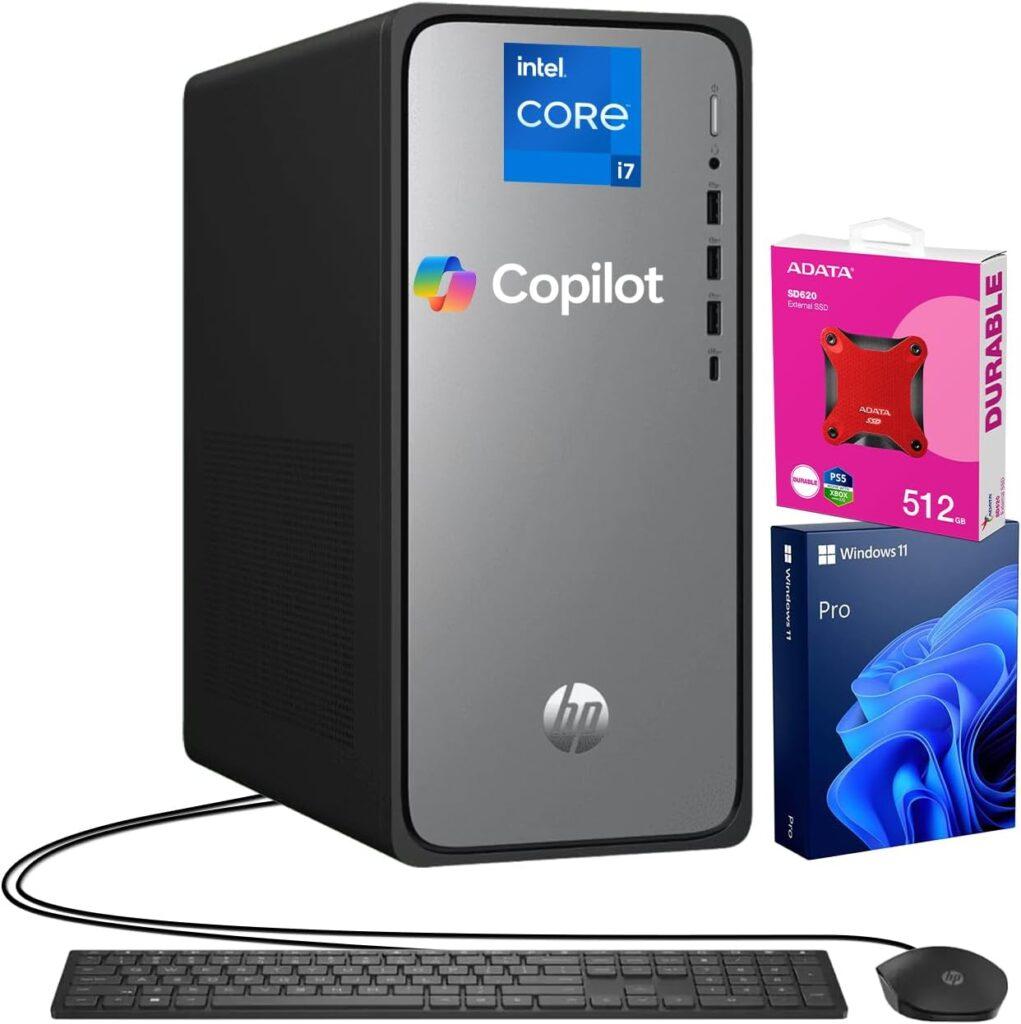
Key Details:
- 14th Gen Intel Core i7-14700 (20 Cores, up to 5.4GHz Turbo)
- 32GB DDR5 RAM and 1TB PCIe SSD
- WiFi 6, Bluetooth, HDMI, DisplayPort, Ethernet
- Bundled with Lexar SL660 512GB Portable SSD
- Windows 11 Pro
If you want your home office to run like a corporate workstation, the HP 2025 Omnidesk M02 is one of the most advanced business desktops out there. It’s powered by Intel’s 14th Gen i7 processor with AI Copilot support, making it ideal for users who multitask across creative tools, office apps, and analytics programs.
Testing showed blazing-fast response times and instant load speeds, even under heavy usage. The additional 512GB external Lexar SSD is a nice touch, giving you even more storage flexibility. The tower’s airflow design also keeps temperatures impressively low — great for long workdays.
Connectivity is a strong point here — USB-C, DisplayPort, HDMI, and WiFi 6 make it ready for modern office accessories and external monitors. It’s built for professionals who need speed, security, and future-proof performance.
If you’re setting up a high-end home office and want a desktop that feels both powerful and polished, the Omnidesk M02 is a system that won’t leave you wanting more.
Pros:
- High-end 14th Gen Intel i7 performance
- AI Copilot-ready for smart workflows
- Includes bonus Lexar external SSD
- Excellent cooling and quiet operation
Cons:
- Premium pricing compared to mid-range models
- Large tower design takes up more space
9. Best Compact Choice: Apple 2024 Mac mini Desktop Computer
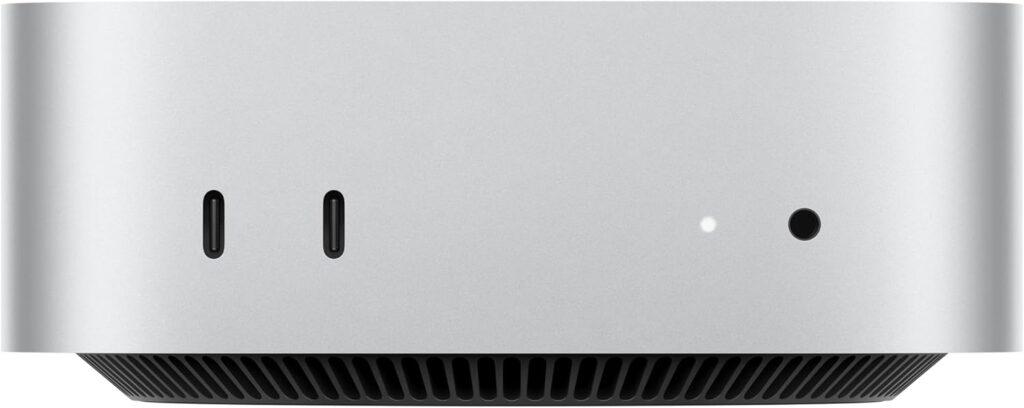
Key Details:
- Apple M4 chip with 10-core CPU & 10-core GPU
- 24GB unified memory, 512GB SSD storage
- Wi-Fi 6E, Bluetooth 5.3, Gigabit Ethernet
- Three Thunderbolt 4 ports, HDMI, USB-C
- macOS Sonoma, Apple Intelligence ready
If you’ve been wanting desktop power without the bulk, the 2024 Mac mini delivers exactly that. It’s smaller than most external hard drives but runs like a true powerhouse for office professionals. The M4 chip gives it incredible speed for multitasking, and it works seamlessly with iPhone and iPad—ideal if you’re already in the Apple ecosystem.
When tested with multiple monitors and simultaneous apps, it handled daily office workflows effortlessly. Copying large files, editing documents, and managing cloud backups all felt instant. It also stays whisper-quiet, making it perfect for small home offices or shared workspaces.
The sleek aluminum design looks modern and fits into nearly any setup—just pair it with a monitor, keyboard, and mouse, and you’re ready to go. If your priority is compact efficiency and future-proof Apple Intelligence performance, the Mac mini is the best small-form option on the market.
Pros:
- Tiny size with big performance
- Exceptional multitasking on macOS
- Quiet and energy-efficient
- Works flawlessly with other Apple devices
Cons:
- Requires external monitor and accessories
- Limited internal upgrade options
10. Best Mid-Tier Performer: Dell Desktop Computers 3030 Tower
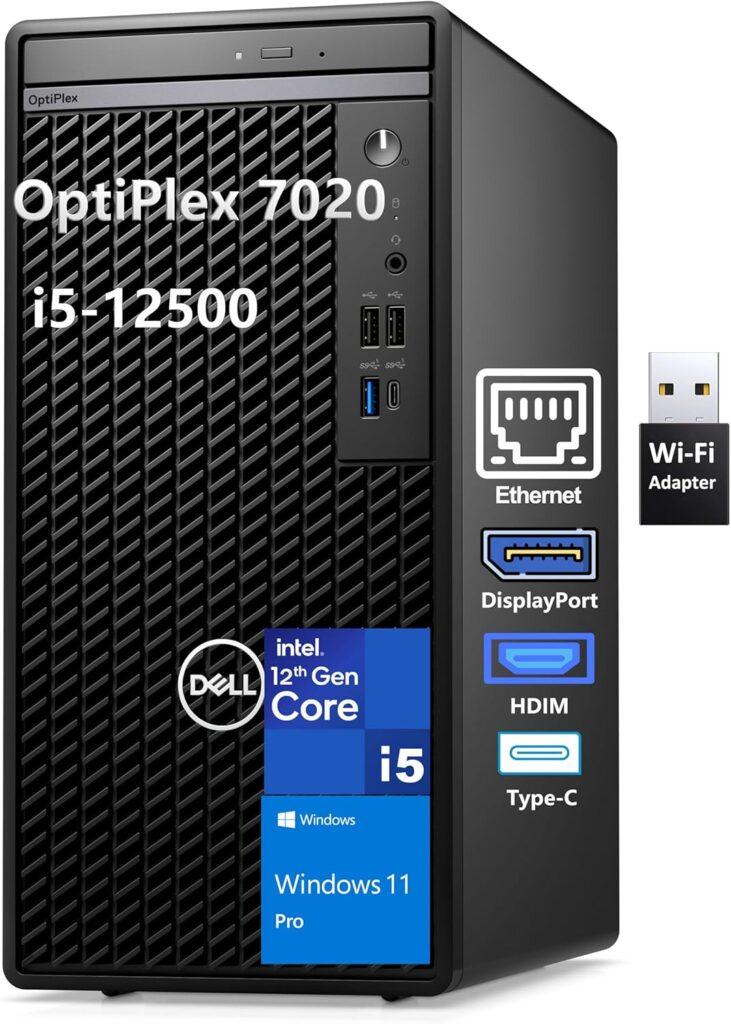
Key Details:
- 14th Gen Intel Core i5-14400 (10-Core, up to 4.7GHz)
- 32GB DDR5 RAM and 1TB PCIe SSD
- Intel UHD Graphics 730
- HDMI, DisplayPort, Type-C, Wi-Fi 6, Ethernet
- Windows 11 Pro
If you’re the kind of user who likes strong multitasking power but doesn’t need an extreme workstation, the Dell 3030 Tower strikes a great middle ground. It’s fast, modern, and dependable—exactly what a home office setup should feel like when you turn it on each morning.
During testing, this system showed excellent responsiveness while running multiple displays and cloud-based software. The 32GB DDR5 memory ensures apps load quickly, while the 1TB SSD provides ample storage for work files. It’s also impressively quiet, even under moderate load.
The design feels familiar and businesslike, with a silver mesh front and plenty of USB ports, including USB-C for newer peripherals. It’s the kind of desktop that quietly does its job day after day—no drama, just productivity.
If you’re managing reports, marketing tasks, or remote collaboration, the Dell 3030 gives you all the horsepower you’ll realistically need for years to come.
Pros:
- Fast and efficient 14th Gen i5 processor
- Smooth multitasking for business users
- Excellent connectivity and port selection
- Stable and quiet operation
Cons:
- No dedicated graphics for design-heavy work
- Tower size may be overkill for minimalists
11. Best All-in-One Option: Lenovo 24 All-in-One Desktop Computer
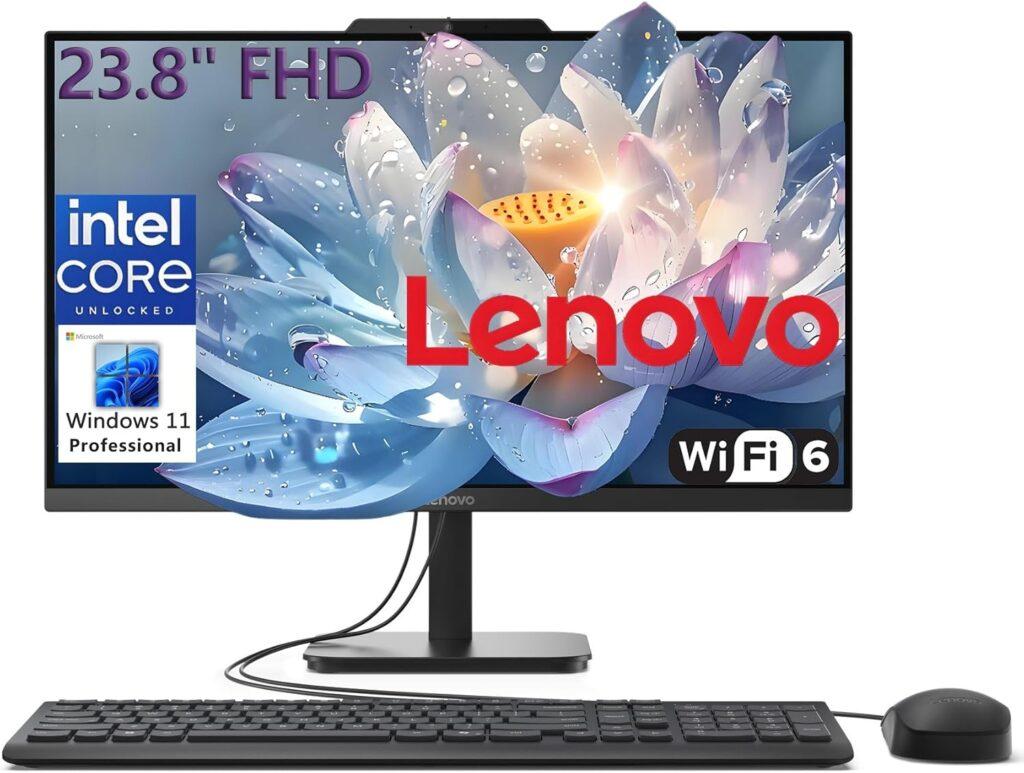
Key Details:
- Intel N100 Quad-Core CPU (up to 3.4GHz)
- 32GB DDR4 RAM and 1TB PCIe SSD
- 23.8″ Full HD anti-glare IPS display
- Wi-Fi 6, Bluetooth 5.2, HDMI, Ethernet
- Windows 11 Pro
If you’re working from home and want a clean, ready-to-go setup, the Lenovo 24″ AIO is an excellent all-in-one choice. It’s stylish, simple, and surprisingly powerful for everyday productivity—no cables, no clutter, just plug it in and start working.
Testing showed that it handled daily workloads—email, spreadsheets, and Zoom meetings—without hiccups. The Full HD display offers crisp visuals, and the color accuracy is impressive for its class. It’s a great fit if you like an all-in-one PC that doubles as a professional workstation and a family computer.
The 32GB RAM and 1TB SSD combination make it feel much faster than typical AIOs in this price range. The included keyboard and mouse keep the setup uniform, while the compact design saves a ton of desk space.
If you want a desktop that looks neat, runs quietly, and handles workdays with ease, the Lenovo V100 AIO checks all the right boxes for a home office professional.
Pros:
- Space-saving all-in-one design
- Smooth performance with 32GB RAM
- Sharp, bright display with anti-glare coating
- Great value for business or study setups
Cons:
- Limited upgrade potential
- Basic graphics for visual work
12. Best Mini Business Desktop: Lenovo ThinkCentre Tiny M70q Gen 5
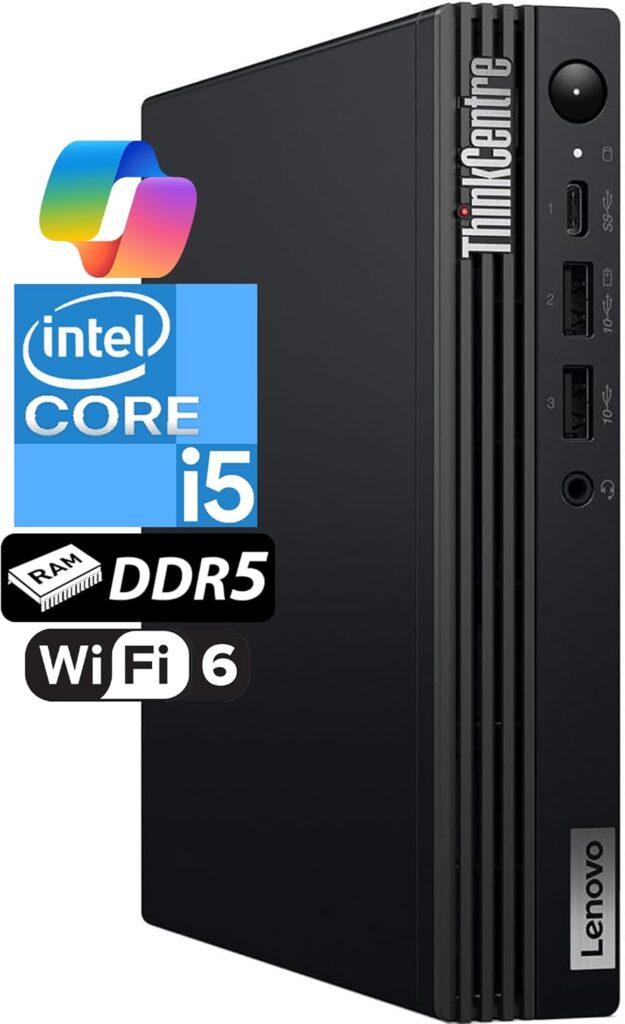
Key Details:
- 14th Gen Intel Core i5-14400T (10-Core, up to 4.4GHz)
- 16GB DDR5 RAM and 512GB NVMe SSD
- Intel UHD Graphics 770
- Wi-Fi 6E, Bluetooth 5.3, HDMI, DisplayPort, RJ-45
- Windows 11 Pro, 3-Year Warranty
If your desk space is limited but you still want business-class performance, the Lenovo ThinkCentre M70q Gen 5 is one of the smartest investments you can make. This tiny PC fits almost anywhere—behind a monitor, under a shelf, or beside your keyboard—but it performs like a full tower.
When tested in a typical remote-work setup, it ran multiple office apps, browser windows, and conferencing software smoothly. The i5-14400T chip strikes a perfect balance between power and efficiency, while the Wi-Fi 6E connectivity kept video calls rock-solid even on dual-monitor setups.
The ThinkCentre’s biggest strength is reliability—it’s built for long-term business use and stays cool even after hours of operation. Plus, with Lenovo’s three-year warranty, you’re getting extra peace of mind for your investment.
If you value space efficiency and a quiet, no-nonsense machine that can still handle demanding workloads, the M70q Gen 5 is a fantastic fit for any home office.
Pros:
- Ultra-compact size with desktop-level performance
- Efficient and cool operation
- Business-grade durability and 3-year warranty
- Wi-Fi 6E and Bluetooth 5.3 connectivity
Cons:
- Not designed for gaming or creative editing
- Limited internal upgrade space
Why You Need a Reliable Desktop Computer for Home Office
A reliable desktop computer can transform how you work from home by improving focus, cutting distractions, and delivering consistent speed all day. Unlike laptops, desktops offer superior cooling, easier upgrades, and a more comfortable workstation setup that supports productivity over long hours.
Here’s why investing in the right home office desktop pays off:
- Consistent performance: Handles multitasking and heavy workloads without slowdowns.
- Better ergonomics: Supports full-sized keyboards, large displays, and proper posture.
- Lower long-term cost: Desktops last longer and are easier to upgrade or repair.
- Improved multitasking: Ideal for users who switch between multiple apps, browsers, and video calls.
- Quiet and stable operation: Designed to run cool and efficiently during extended work sessions.
How to Choose the Best Desktop Computers for Home Office
Selecting the best desktop computer for your home office depends on your daily workload, available space, and long-term needs. The goal is to find a balance between performance, reliability, and practicality that fits how you actually work each day.
CPU and Overall Performance
The processor is the brain of your desktop. A stronger CPU handles multitasking and demanding applications faster. For general office work, an Intel Core i5 or AMD Ryzen 5 is ideal, while power users may prefer an i7 or Ryzen 7 for heavy spreadsheets, data processing, or video editing. A newer generation processor also means better power efficiency and future compatibility.
Memory (RAM) Capacity
RAM determines how smoothly your desktop handles multiple programs at once. If you regularly work with multiple tabs, spreadsheets, or design tools, 16GB should be your minimum. Light users can manage with 8GB, but upgrading to 32GB ensures future-proof performance without slowdowns.
Storage Options (SSD vs HDD)
For home office tasks, an SSD is always worth it. It boots your system in seconds and opens apps instantly. SSDs are also quieter and more energy-efficient than traditional HDDs. A good setup pairs a 512GB SSD for speed with an additional HDD if you store large files or backups.
Form Factor and Space Efficiency
If you have limited desk space, consider compact towers or mini PCs. Traditional towers are easier to upgrade, while all-in-one desktops reduce clutter by combining the screen and computer in one. Choose based on whether you prefer flexibility or simplicity.
Connectivity and Ports
A home office desktop should have enough ports to support your workflow. Look for USB-C for fast transfers, HDMI or DisplayPort for external monitors, and Ethernet for stable connections. Built-in Wi-Fi 6 and Bluetooth 5.3 also improve speed and pairing reliability for wireless devices.
Operating System and Ecosystem
Choose an operating system that fits your daily tools. Windows is versatile for office applications, while macOS integrates seamlessly with iPhones and iPads. ChromeOS can be great for cloud-based work but has limited offline capability.
Desktop vs Laptop for Home Office: Which Is Better?
If you work primarily from one place, a desktop offers more stability, cooling, and long-term power than a laptop. Laptops win in portability, but desktops deliver better ergonomics and value over time. Understanding what matters most to your workflow helps you decide which setup truly supports your productivity.
| Feature | Desktop Computer | Laptop |
| Performance | Stronger CPUs, better multitasking | Slightly weaker for price |
| Upgradeability | Easy to upgrade RAM, storage, GPU | Limited or non-upgradable |
| Ergonomics | Full-sized keyboard, larger display | Requires docking for comfort |
| Portability | Stationary setup | Perfect for travel or hybrid work |
| Cooling & Noise | Better airflow, less throttling | Smaller fans, higher heat output |
| Cost Efficiency | More performance per dollar | Pricier for equivalent specs |
| Lifespan | 5–7 years average | 3–5 years average |
If you stay mostly at your desk and want longevity and comfort, go for a desktop. If flexibility and mobility matter more, a high-performance laptop might suit you better.
Why Noise and Thermals Matter in a Home Office PC
Noise and heat might not sound like big issues at first, but they can make or break your work comfort over time. A loud fan or overheating system can distract you during meetings, reduce focus, and even shorten your computer’s lifespan.
A well-cooled desktop runs quieter because larger cases allow for better airflow and bigger fans that spin slower. Efficient cooling also keeps internal components stable, preventing sudden slowdowns when your CPU heats up under pressure.
When choosing a home office PC, check for efficient cooling design, low-TDP processors, and quiet fans. These small details make a big difference in long-term comfort and reliability—especially if you spend hours in front of your screen every day.
Final Words
Choosing the right desktop can make working from home smoother, faster, and more comfortable every day.
If you want dependable performance and a balanced setup, the Dell Vostro 3030 3000 Tower Business Desktop remains one of the most practical and reliable options for most users. For professionals who handle heavier workloads or need more multitasking power, the HP Desktop Computers Tower PC delivers exceptional value with its larger RAM and faster processor.
Ultimately, the best desktop computers for home office are those that match your work habits—offering quiet performance, easy upgrades, and long-term stability. Whether you need something compact, all-in-one, or enterprise-level powerful, investing in a reliable machine will keep your productivity high and your setup stress-free for years to come.
Related FAQs
What specs should I look for in a home office desktop?
At least an Intel i5 or Ryzen 5 CPU, 16GB RAM, and a 512GB SSD will keep everyday office work smooth and responsive.
Are all-in-one desktops good for home office setups?
Yes, they save space and reduce cable clutter, making them great for smaller work areas, though they’re harder to upgrade.
How long should a desktop last for home office use?
A good desktop typically lasts 5–7 years with proper care and occasional upgrades to memory or storage.
Is a desktop or laptop better for working from home?
Desktops offer better performance and ergonomics, while laptops provide flexibility if you work in multiple locations.
Can I use a gaming PC as a home office computer?
Absolutely. Gaming PCs handle office tasks easily, though they may be louder and use more power than business desktops.

Josh is a lifelong tech enthusiast with a passion for building powerful, reliable PCs. With years of hands-on experience, he shares practical advice to help readers make smarter choices, whether it’s picking the right components or solving build issues at home. Josh focuses on what really matters in real-world use, offering honest insights that come from testing, tinkering, and learning along the way. He’s here to make tech feel a little less overwhelming and a lot more useful.

